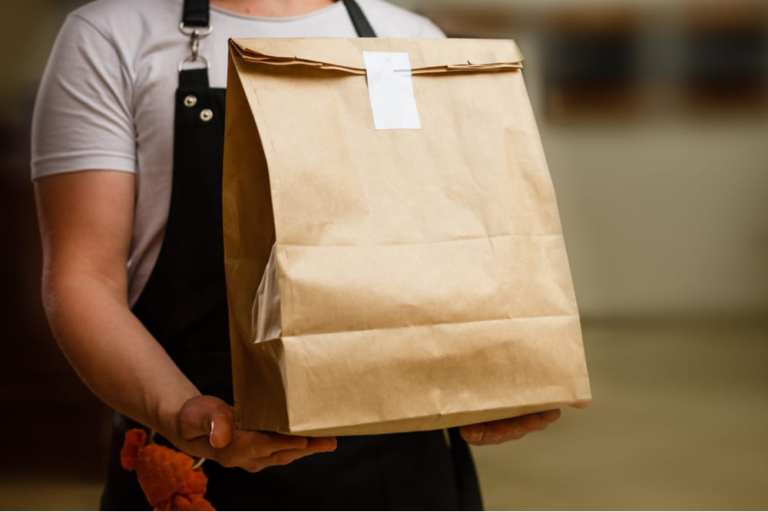
The restaurant industry is in a state of massive flux, with almost all on-site dining switched to carry-out as shutdowns in most U.S. states forced eateries to close their doors for months.
But while the sudden explosion of food delivery and curbside pickup feels like a new thing, Tim Ridgely, head of order and delivery at customer-engagement platform Paytronix, told PYMNTS in a recent conversation that it really isn’t.
Long before the COVID-19 pandemic, he said, restaurants were already expanding and improving their pickup and delivery capabilities in an attempt to build better and more convenient consumer experiences. The pandemic didn’t create or radically reset those trendlines so much as it dramatically accelerated processes that were already happening, Ridgely said.
“Delivery was ramping up, curbside was ramping up, all of those things were ramping up,” he said. “It’s just that these things have gone from a bit of a luxury item to something everyone does now. This is now the way the world works.”
What the health crisis has changed is that delivery and curbside pickup are about more than just convenience now. Instead, consumers’ ability to purchase what they want and receive it in a contact-free manner has become a non-negotiable safety requirement — and one that restaurants have quickly risen to meet.
But the time for adaptation isn’t over for restaurants, Ridgely said. As the U.S. economy begins to reopen, eateries’ challenge will be how to build on what they’ve already added and further enhance the diner’s experience, so customers keep coming back after public health concerns have passed.
“The things that really add to customer convenience and enhance the experience for consumers — those are going to be the things that stay around well after COVID-19 is done and continue to draw innovative interest,” he said.
A Rapid Reset
Restaurants that didn’t offer takeout or delivery before the pandemic began faced an unbelievably high wall when the shutdown started, as offering those services was the only way to stay in business. Ridgely said Paytronix aimed to help by rolling out a rapid launch offering to help those restaurants quickly add online ordering.
“When COVID hit and everything started to shut down, stores realized they needed online ordering yesterday,” he said. “So, we built the rapid launch program so that stores could be up and running super-fast.”
The company had restaurants taking orders within two days. Ridgely said some clients have seen totally unexpected success via these new offerings, with takeout revenues topping $1 million per month within a few weeks.
The company has seen enough success with its rapid launch among restaurants that it’s expanding the offering to more clients
Keeping Customers Loyal
The other massive overnight shift restaurateurs have had to make in recent months is in how to leverage and extend their loyalty and rewards programs to consumers in the pandemic era.
Ridgely said the first phase involved having restaurants look at their pre-pandemic loyalty programs to make sure they weren’t tone-deaf to current conditions. Campaigns that encouraged consumers to come in and get a free sandwich had to go immediately.
However, Ridgely said loyalty programs are going to be key drivers in getting people back into restaurants in the post-pandemic period. Not only can restaurants use rewards programs to get consumers to return to establishments, they can also use the programs to message customers about how safe and clean an eatery is. Loyalty programs also give brands an opportunity to assure customers of a restaurant’s value no matter how clients order food or where they eat it.
“If a guest wants to remain off-premises,” Ridgely explained, “it is more important than ever to say, ‘Great, we want to interact with you in the way that you’re comfortable, and you can still earn your rewards on-premise or off-premise.’ You can do that through delivery. You can do it through curbside. All of these things are options that need to be there.”
From where Paytronix sits, building such multimodal experiences will be an important step in cementing restaurant recovery, he said.
Contactless Payments Will Also Be Key
Ridgely said many customers want to get back to eating in restaurants, as there’s something about the communal dining experience that inherently appeals to the American consumer.
But given how pervasive health concerns have become in recent months, consumers aren’t going to want the experience to be exactly the same as it was before — particularly when it comes to payments. That’s why Paytronix is currently focused on helping eateries make their in-house payments process just as contactless as the one that accompanies deliveries.
“Let’s put the payment in the hands of the guests so that they can pay with their card through their phone and they don’t need to do the credit card back and forth, all that stuff,” Ridgely said. “That touchpoint goes away. The initial ordering touchpoint can go away, and the guests can just begin their order by scanning a QR code with their phone, launching the ordering process, pick out their apps and drinks, things like that inside of the kitchen. Off they go.”
That method will be both safer and more convenient for guests, he said. After all, everyone has had the experience of being late for a movie and just wanting to pay the check and go, only to find themselves waiting for a server to bring them a check. Ridgely said a new system of contactless in-house payments will both support public health and remove the pain point of missing the coming attractions.
Ultimately, he said, restaurants must simply do what they’ve always done — build for consumer convenience. Only now, they must use technology in the post-pandemic period to make the dining out experience both smoother and safer.
“None of these big changes we’ve seen of late are going anywhere soon because all the things that drive consumer convenience are going to stick,” Ridgely said.